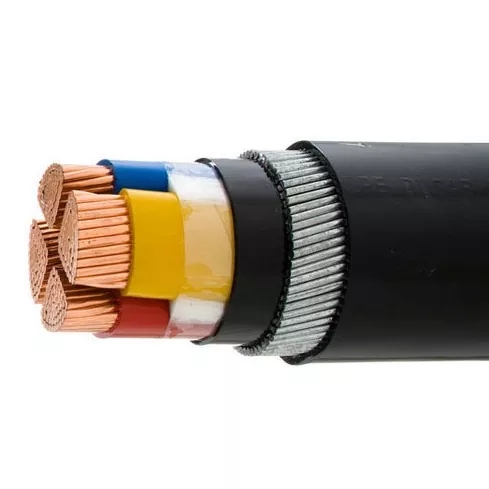Characteristics of medium voltage cables
2023-10-16
Medium voltage cables are electrical cables designed to carry electrical energy at voltages ranging from approximately 1,000 to 35,000 volts. These cables are commonly used in a wide range of applications, including power distribution, industrial settings, utility networks, and infrastructure projects where higher voltage levels are necessary for efficient energy transmission.
Here are some key features and characteristics of medium voltage cables:
1. Voltage Range: Medium voltage cables typically operate at voltages between 1,000 and 35,000 volts, although specific standards and regulations in different regions may define the voltage range more precisely.
2. Insulation: Unlike low-voltage cables used in homes and buildings, medium voltage cables have thicker insulation layers to withstand the higher voltages and reduce the risk of electrical breakdown or leakage.
3. Conductor Material: Common conductor materials for medium voltage cables include copper and aluminum, chosen for their good electrical conductivity and suitability for various applications.
4. Types of Insulation: There are several types of insulation materials used in medium voltage cables, including cross-linked polyethylene (XLPE), ethylene propylene rubber (EPR), and paper/oil insulation for older designs.
5. Shielding: Medium voltage cables often have shielding layers to protect against external electrical interference and to contain electric fields. These shields can be made of metallic materials, such as aluminum or copper tape, or conductive polymer materials.
6. Armor: In some cases, medium voltage cables used in rugged or harsh environments may have an armor layer, such as galvanized steel wire armor or corrugated aluminum armor, for additional mechanical protection.
7. Single-Core and Multi-Core: Medium voltage cables can be designed as single-core (one conductor) or multi-core (multiple conductors). Multi-core cables are often used when multiple conductors are needed for different purposes, such as power, control, and signal transmission.
8. Environmental Resistance: Medium voltage cables are designed to withstand various environmental conditions, including exposure to moisture, heat, cold, and mechanical stress. They are suitable for both indoor and outdoor use.
9. Regulations and Standards: The design and construction of medium voltage cables must adhere to industry-specific standards and regulations to ensure safety and reliability. Different regions and countries may have their own standards.
Common applications of medium voltage cables include:
1. Power Distribution: Medium voltage cables are used to distribute electrical power from substations to neighborhoods and industrial facilities.
2. Industrial Processes: They are employed in various industrial settings to provide power to heavy machinery, motors, and equipment.
3. Utilities: Utility companies use medium voltage cables for electricity transmission and distribution in their networks.
4. Renewable Energy: Medium voltage cables are used in renewable energy systems, such as wind and solar farms, to transmit power to the grid.
5. Infrastructure Projects: These cables are used in infrastructure projects like underground tunnels, airports, and transportation systems.
It's essential to choose the right type of medium voltage cable based on the specific requirements of the application, including voltage, insulation material, shielding, and environmental conditions. Proper installation and maintenance are crucial to ensure the safety and reliability of medium voltage cable systems.



